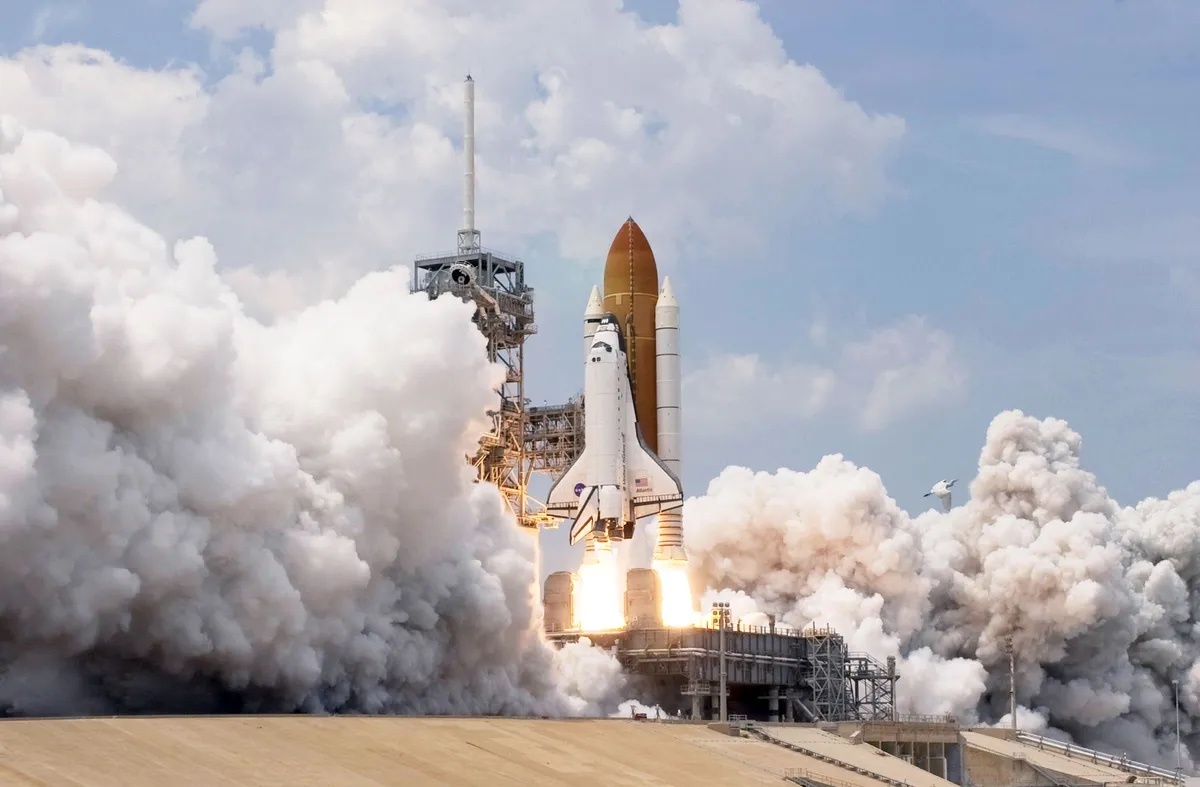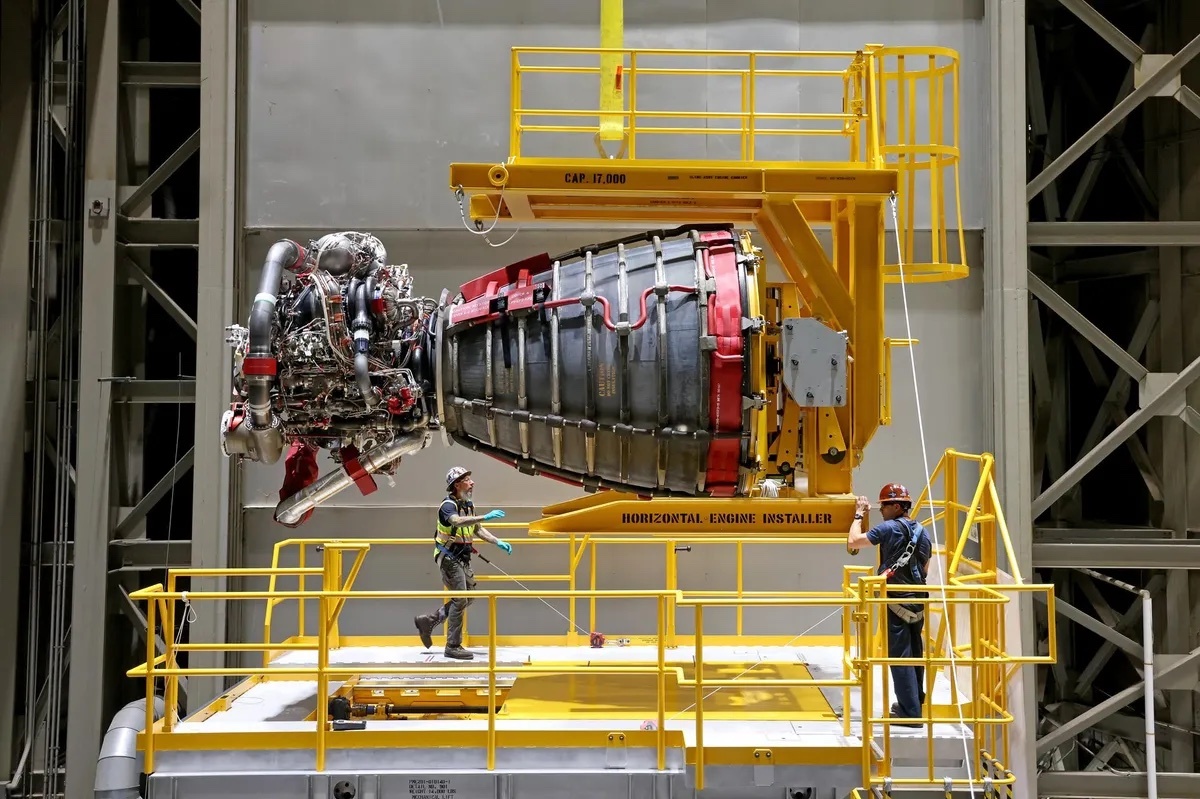19.09.2023
The engine once powered a servicing mission to the Hubble Space Telescope. Next, it will power a crewed mission around the moon.

Space shuttle Atlantis (bottom) releases the Hubble Space Telescope into a free-flying orbit on May 19, 2009, using the robotic Canadarm. An RS-25 engine powering that space shuttle is now being used for Artemis 2, a human moon mission. (Image credit: NASA)
A rocket engine that helped power a servicing mission to the Hubble Space Telescope is now readying for the moon.
NASA's Artemis 2 mission is scheduled to fly four astronauts around the moonno earlier than November 2024. The big Space Launch System (SLS) rocket that will launch Artemis 2 is coming together: Technicians at a NASA center installed the first of four recycled R-25 space shuttle engines on the powerful rocket's core stage on Monday (Sept. 11).
That engine, No. E2059, was once nicknamed a "Hubble Hugger" by NASA officials due to a special mission it had with the space shuttle: Making the last astronaut visit to the Hubble Space Telescope to service the venerable observatory, on the STS-125 mission in 2009. Hubble continues to run in excellent health today, 14 years later.
Artemis 2 will send NASA's Reid Wiseman, Victor Glover and Christina Koch, along with Canadian Space Agency astronaut Jeremy Hansen, around the moon and back. Glover, Koch and Hansen will become the first Black person, the first woman and the first non-American, respectively, to travel beyond low Earth orbit. The four astronauts are already deep in training for the effort.
Engine E2059 on the Boeing-made SLS core stage flew to space five times during the space shuttle program, according to NASA. Notably, it delivered the wraparound cupola viewing window to the International Space Station aboard mission STS-130 in 2010.
Two of the remaining three RS-25 engines (E2062 and E2063) to be installed on the SLS core stage are new engines with flown hardware inside, while the third (E2047) flew on 15 space shuttle missions.
When the four RS-25 engines, manufactured by Aerojet Rocketdyne, roar to life on SLS, they will burn their fuel at a rate that would drain one Olympic-sized swimming pool each second: that's 1,500 gallons (5,678 liters), according to agency documentation.
The core stage is being assembled at NASA's Michoud Assembly Facility in New Orleans. After assembly, it will be shipped to its launch site at NASA's Kennedy Space Center (KSC) in coastal Florida by barge. There, the core stage will be mated to the rest of the rocket and then tested ahead of the historic launch.

Image credit: NASA)

(Image credit: Michael Democker/NASA)
While the rocket is being put together, ground teams are working on other prelaunch prep. The high tower supporting the rocket is now at Launch Pad 39B at KSC undergoing months of testing, with new steps being added to assure crew safety, as this is the first launch with astronauts of NASA's Artemis program.
And on Monday — the same day the first rocket engine was being mounted to the Artemis 2 SLS core stage — a team led by NASA launch director Charlie Blackwell-Thompson completed a terminal countdown at KSC to get ready for key liftoff milestones, NASA officials wrote on X (formerly Twitter).
Artemis 2 is the second mission of NASA's larger Artemis program, which includes international funding and hardware. The first one, Artemis 1, saw the SLS send the Orion spacecraft on an uncrewed mission to lunar orbit and back late last year. Assuming that Artemis 2 goes to plan, NASA will send another quartet of astronauts to the moon again in late 2025 or 2026.
The primary goal of that mission, called Artemis 3, is to land some of those people on the moon, in the first such effort since Apollo 17 in 1972. NASA, however, is awaiting the arrival of key hardware such as the SpaceX Starship lander that will carry astronauts to the surface, and the spacesuits that will be used for lunar excursions.
Quelle: SC

